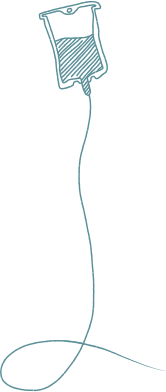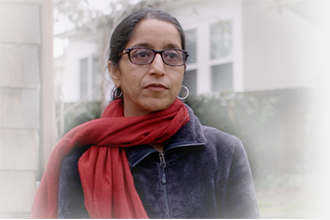

UNDERSTANDING BETA-THALASSEMIA
TYPES OF
BETA-THALASSEMIA
There are 3 different ways to describe beta-thalassemia: historical types, genotypes, and transfusion-dependent or non-transfusion dependent.
Historical types of beta-thalassemia
Historically, beta-thalassemia has been classified into 3 main groups, based on the symptoms a person has and when they first start to show signs of the disease. The 3 main types are:
Thalassemia major
People show serious symptoms of disease between the ages of 6 months and 2 years. Without regular transfusions, most of these people do not survive childhood.
Thalassemia intermedia
People may show symptoms of disease later than thalassemia major, possibly not until adulthood, and may have no symptoms or milder symptoms that either do not require transfusions or only occasionally require transfusions.
Thalassemia minor (also called “beta-thalassemia trait”)
Even though these people carry the disease trait (they may, in fact, be called “carriers”), they usually do not have any symptoms, although some people may experience mild anemia.
DID YOU KNOW?
β-thalassemia may also be described as Mediterranean Anemiaa condition where there aren’t enough healthy red blood cells to carry adequate oxygen to the body's tissues or Cooley’s anemia.

“Me and my husband have thalassemia minor. So they checked [our daughter’s] blood, and we came to know that she has thalassemia major.”
Pushpinder
actual beta-thalassemia caregiver, mother of Rammeet
Beta-Thalassemia Genotypes
Knowing your genotypeGenotypeyour genetic makeup for any trait, which may be labeled with a pair of letters, each representing the copy of a gene inherited from one of your parents can be important to help understand and talk about your thalassemia. There are nearly 350 different changes in the HBB gene that can cause beta-thalassemia. The different changes are grouped and represented by one of the categories shown below, with each letter representing the gene you inherited from each parent. When paired, these categories then create a genotype:
- β⁰ (beta-zero): no beta-globin is produced
- β⁺ (beta-plus): a reduced amount of beta-globin is produced
- βᴱ (hemoglobin E): a reduced amount of beta-globin is produced; this genotype is most common in Southeast Asia
Genotypes are often written as 2 letters, with 1 letter representing a copy of the gene from each parent. People with beta-thalassemia can have any mix of the 3 genotypes above. A person can inherit 2 copies of beta⁰ (known as a beta⁰/beta⁰ genotype), or 1 copy or no copies of beta⁰ (known as a non-beta⁰/beta⁰ genotype, which are less severe).
Your genotype can be determined by a blood test and may help your doctor with treatment decisions. Many people with beta-thalassemia learn their genotype when they are first diagnosed. If you’re not sure what your genotype is, you can ask your doctor.
Transfusion-Dependent or Non-Transfusion Dependent
There are people living with beta-thalassemia who receive regular red blood cellRed blood cella hemoglobin-containing cell that carries oxygen throughout your body transfusions to help make up for their lack of healthy red blood cells. Some doctors are starting to categorize beta-thalassemia based on whether or not a person depends on regular blood transfusions to survive and function. If a person needs regular blood transfusions, it is sometimes called transfusion-dependent beta-thalassemia, or TDT. For patients who do not receive regular transfusions, the term non-transfusion dependent beta-thalassemia(or NTDT) may be used.
Although some may categorize beta-thalassemia by historical types or specific genotypes, our website will use TDT and NTDT to describe the types of beta-thalassemia.
Do You Have TDT?
The most straightforward way to talk about your beta-thalassemia may be about whether you receive regular transfusions or not. If you are dependent on transfusions to manage your beta-thalassemia, TDT may be the most direct way to describe your disease.
Diagnosis and Testing for Beta-Thalassemia
Doctors can diagnose beta-thalassemia based on symptoms and through the use of blood tests. The most common blood test you will have is the complete blood count (CBC). The complete blood count is a series of tests that determine the number of red and white blood cells you have, as well as the level of hemoglobin in your blood. The results from the complete blood count will help your hematologist determine how well your red blood cells are carrying oxygen throughout the body. This will also help your hematologist in determining your level of anemia.

Want more information?
Download the Understanding Beta-Thalassemia brochure to learn more about beta-thalassemia at the genetic level.

 This website is developed by bluebird bio, Inc. and is intended for residents of the United States who are 18 years and older.
This website is developed by bluebird bio, Inc. and is intended for residents of the United States who are 18 years and older.